Gear Disassembly: Climbing harnesses
2016-08-30
My climbing harness was looking pretty worn, and it's pretty old, so after much research I gave up and went out and got a new one.
After buying the new one, I started looking the old one over more carefully as to how it was built. I had my suspicious, but I wanted to see for myself, for sure. Seeing how it's built makes it a lot easier to see what spots really matter, and thus evaluate a harness for wear. So... without further ado, here's the photos I took as I disassembled the harness.
Note that this is just my muddling through, thinking, and playing around. As always don't take anything said here as advice, and certainly not EXPERT advice. Make your own decisions, I just thought it'd be interesting to share.
Here's the harness prior to disassembly (well, I'd cut a few stitches, but you get the idea):
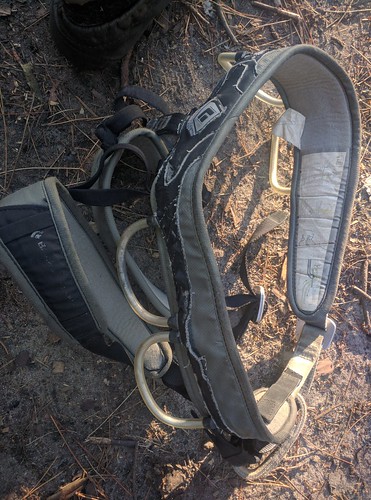
Here's the most interesting image. Fundamentally the belt is one piece of webbing with stuff sewed to it. The rest is just padding:
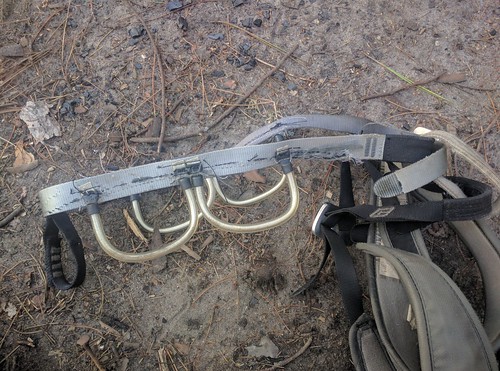
Here's how that's assembled (or disassembled in this case).

Note the single bar-tack holding the gear-loop in place. The gear-loop is really just the webbing inside the plastic tube.
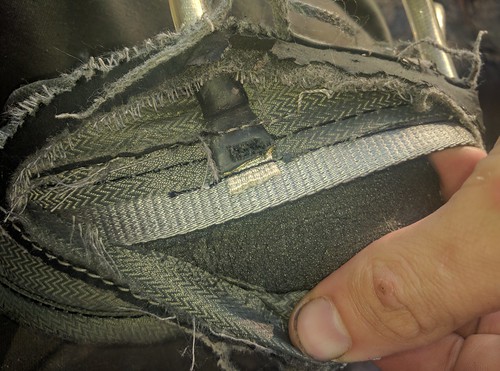
Before this time I had never throught critically about the structural integrity of the belay loop assembly. Note the webbing is wrapped with another layer of webbing at the critical point. Until that outer layer is worn through it seems pretty hard to wear through the webbing beneath. I'd seen stitching wear where the protective layer is sewn to the structural layer and gotten worried, in retrospect I could see how this was built and should've seen it was still sound.
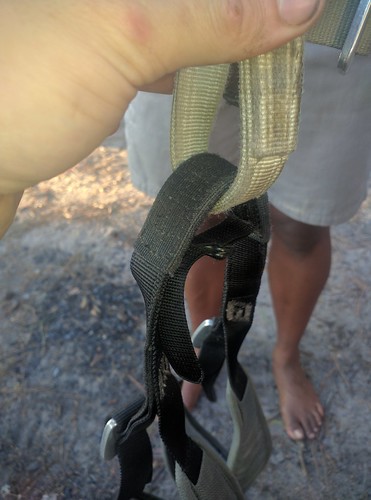
I was surprised at how well the rear haul-loop was attachaed. 4 bar-tacks and it goes fully *around* the belt. The bar-tack to the belt is just to hold it in place, and is fundamentally non-structural... interesting!
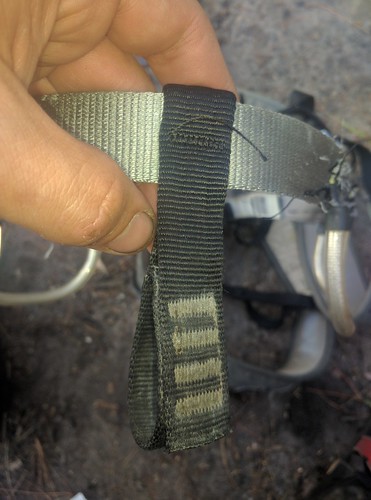
Overall I think if I'd sat down and really *looked* at my harness I would've kept it a lot longer before replacing it, there really wasn't anything wrong with it yet. Oh well... that said I got a good deal on a new one, and the new one is sweet and comfy, so at least I didn't waste all that much money.
Again... this is just my own analysis of my safety, and of course other harnesses may be constructed differently. My intention is simply to help other people understand how their gear is built so they can make educated decisions as to when to retire them (or maybe even what to purchase in the first place).

